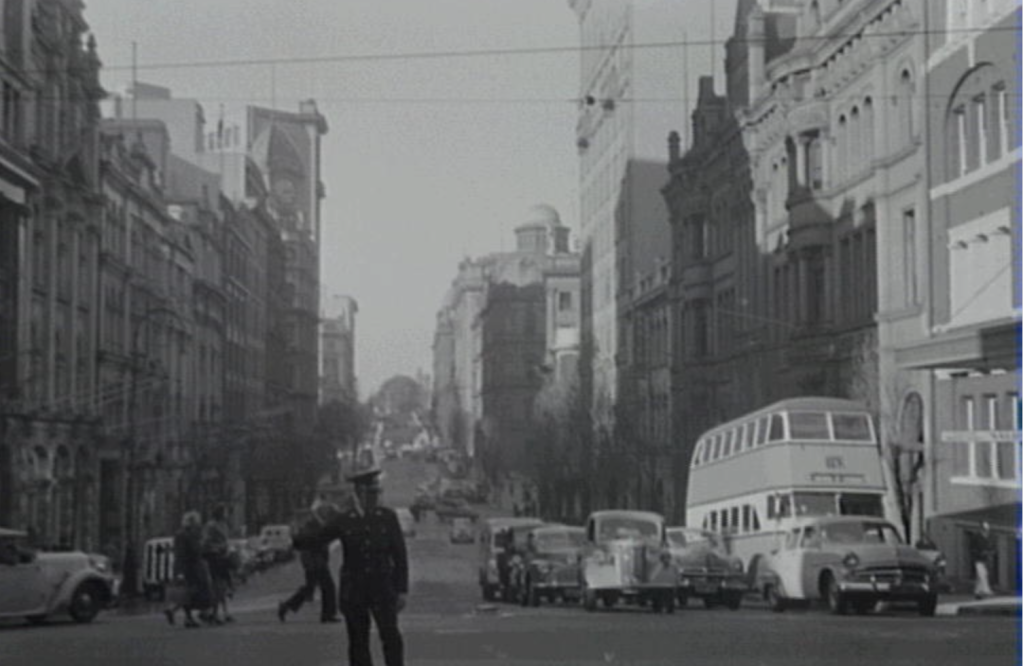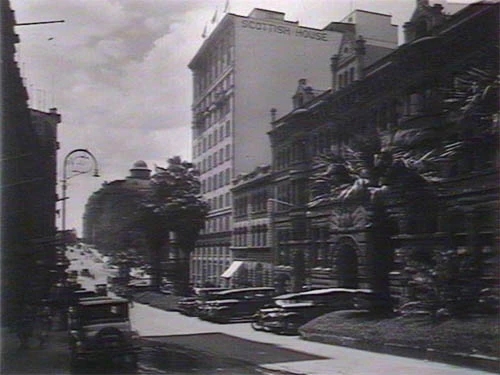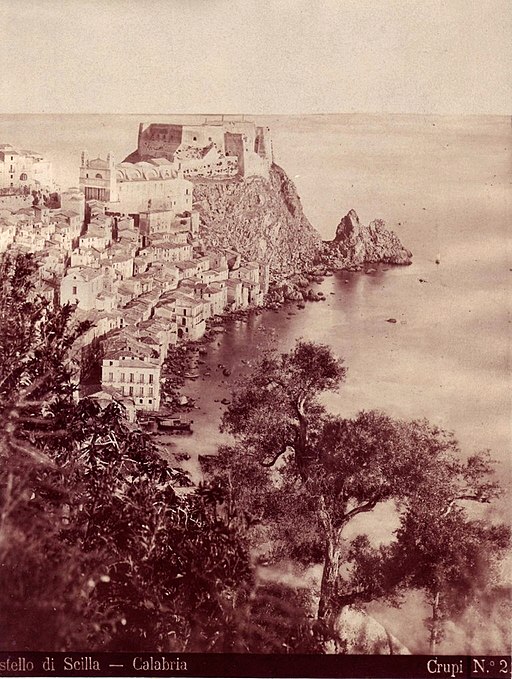So, I have spent a ridiculous amount of time today trying to find out when the palm trees in Bridge Street were removed. I’ve been through blogs, endless google searches, at least an hour at the City of Sydney Archives, eBay, Alamy you name it. It sounds trivial but I need to know the date so that I can place a flash I have written, chronologically, in my collection. For the moment their loss features in my just written flash but now I’m obsessed with the when.
I had heart failure earlier in the day when I found a postcard featuring the palms dated 1958, a date that completely rules out the flash from being included in my collection. But I’ve since found the photo below dated by the Sydney Archives as 1954 with no palm trees. So hopefully the trees were removed sometime in the early 1950s. It’s strange but there are not very many photos of the street in the 1940s. Because of the war perhaps?
You will see that the distinctive Burns Philp building features in both photos. I have also “asked a librarian” at the State Library the question so I will keep you posted on the outcome. In the meantime I’ll probably still be searching in my sleep.

Update: I heard from Kate, a librarian at the State Library, on the 22nd December and she confirmed through various newspaper articles that she found in Trove that the palm trees were chopped down in August, 1946. I’m not sure what I did wrong when searching Trove but I had no luck even though I tried “Any of these words” and “All of these words” for palm trees Bridge Street. Here is a small newspaper article:
And time marches on and over the intervening years so many more trees have been cut down in the name of progress.









 Or not! So, it seems that I have left myself two weeks to complete my second draft of Paris Next Week. I’m not panicking though. Generally I find that the second half of a manuscript is less of a mess than the first half. I’m hitting my stride and have usually by this stage of the work, sorted out my characters.
Or not! So, it seems that I have left myself two weeks to complete my second draft of Paris Next Week. I’m not panicking though. Generally I find that the second half of a manuscript is less of a mess than the first half. I’m hitting my stride and have usually by this stage of the work, sorted out my characters.
 Last week I had a wonderful time discussing researching, writing and publishing at Sutherland Library with, from the right, Julieanne Miles-Brown, Isolde Martyn, Elisabeth Storrs, Diane Murray who chaired the event and myself. The title of the event was
Last week I had a wonderful time discussing researching, writing and publishing at Sutherland Library with, from the right, Julieanne Miles-Brown, Isolde Martyn, Elisabeth Storrs, Diane Murray who chaired the event and myself. The title of the event was